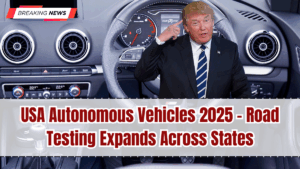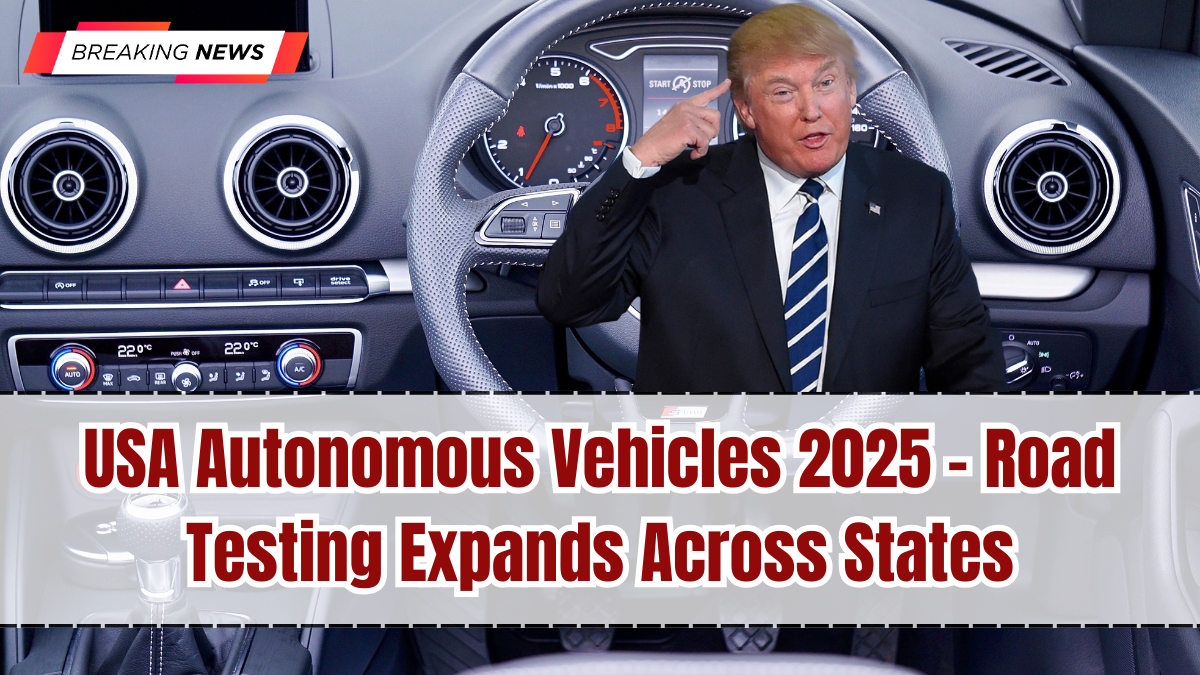The future of mobility is arriving faster than ever, and in 2025 the United States is accelerating the expansion of autonomous vehicle (AV) road testing. Once confined to limited pilot projects in cities like Phoenix and San Francisco, self-driving technology is now spreading across multiple states as regulators, automakers, and tech companies push forward. The USA Autonomous Vehicles 2025 landscape shows how driverless cars are moving closer to mainstream adoption while balancing innovation with safety.

Why 2025 Is a Breakthrough Year
Several factors make 2025 a milestone year for autonomous vehicles:
-
Broader State Approvals – More states are granting licenses for public road testing beyond restricted zones.
-
Technology Advancements – AI-powered perception systems, lidar, and advanced mapping have made AVs more reliable in complex environments.
-
Public-Private Partnerships – Collaborations between governments and private companies are expanding testing opportunities.
-
Consumer Awareness – Public interest in AVs is growing as ride-hailing companies roll out pilot services.
The combination of policy support and technological maturity means the USA Autonomous Vehicles 2025 rollout is progressing at an unprecedented pace.
States Expanding AV Testing
Several states are at the forefront of autonomous vehicle testing in 2025:
-
California: Continues to be a leader, with companies like Waymo, Cruise, and Tesla conducting advanced trials in urban areas. However, stricter safety reporting rules were introduced this year to address public concerns.
-
Texas: Expanded AV testing on highways and rural routes, with autonomous freight trucking trials gaining momentum.
-
Arizona: Phoenix remains a hotbed for AV development, with Waymo One offering public ride-hailing services using driverless vehicles.
-
Florida: Has embraced AV innovation with minimal regulatory barriers, making it attractive for companies testing mixed traffic conditions.
-
Nevada and Michigan: Both states are encouraging AV manufacturing and testing partnerships with automakers like GM and Ford.
By mid-2025, over 25 states have introduced frameworks for autonomous vehicle testing, signaling nationwide readiness.
Leading Companies in the AV Race
The USA Autonomous Vehicles 2025 update highlights major players dominating the field:
-
Waymo – Expanding ride-hailing operations to more cities, with a focus on Level 4 autonomy.
-
Cruise (GM) – Testing driverless taxis in San Francisco, Phoenix, and expanding to Miami.
-
Tesla – Enhancing its Full Self-Driving (FSD) beta program, claiming broader nationwide rollout in 2025.
-
Aurora – Leading the autonomous trucking sector, with trials across Texas and Oklahoma.
-
Motional (Hyundai & Aptiv JV) – Launching pilot AV services in Las Vegas and Los Angeles.
Competition is fierce, but collaboration with regulators ensures that safety remains the priority as these companies race to scale operations.
Safety Measures and Regulations
Safety remains the most critical element of the USA Autonomous Vehicles 2025 program. To address public concerns, new rules require:
-
Detailed accident reporting from AV operators.
-
Emergency fallback systems to take control if software fails.
-
Human oversight in early testing stages, though some Level 4 trials now operate without safety drivers.
-
Cybersecurity standards to prevent hacking of AV systems.
Federal agencies like the National Highway Traffic Safety Administration (NHTSA) are working with states to standardize testing guidelines, aiming for consistency across the country.
Public Reaction
Public perception of autonomous vehicles in 2025 is mixed but improving. Surveys show that about 55% of Americans are open to trying AV ride-hailing services, up from 40% just three years ago. Younger generations are more enthusiastic, while older drivers remain cautious.
Concerns about safety, hacking, and job displacement in trucking persist. However, positive experiences in cities with established AV services are gradually building trust in the technology.
Impact on Transportation and Economy
The expansion of autonomous vehicles is expected to reshape multiple industries:
-
Ride-Hailing: Services like Uber and Lyft are testing AV partnerships to reduce driver costs.
-
Trucking and Logistics: Autonomous freight vehicles could lower shipping costs and address driver shortages.
-
Public Transit: Cities are exploring AV shuttles for first- and last-mile connectivity.
-
Employment: While some jobs may be displaced, new opportunities in AV engineering, maintenance, and oversight are emerging.
The USA Autonomous Vehicles 2025 rollout is therefore not only a technological shift but also an economic transformation.
Future Outlook
Looking ahead, industry experts predict that by 2027, limited commercial fleets of fully autonomous vehicles could be operating in several US cities. Widespread adoption, however, will depend on continued safety improvements, public acceptance, and regulatory alignment.
For now, 2025 represents a turning point, with autonomous vehicles no longer seen as experimental but as an emerging reality in American transportation.
FAQs
Which states are leading autonomous vehicle testing in 2025?
California, Texas, Arizona, Florida, Nevada, and Michigan are among the leaders.
Which companies are testing AVs in the USA in 2025?
Waymo, Cruise, Tesla, Aurora, and Motional are leading the expansion.
Are fully driverless cars legal everywhere in 2025?
No, regulations vary by state, though over 25 states now allow structured AV testing.
How safe are autonomous vehicles in 2025?
They include emergency fallback systems, detailed safety reporting, and cybersecurity standards, but human oversight is still used in many trials.
Will AVs replace truck drivers in 2025?
Not yet, but autonomous trucking is expanding, with gradual integration expected in logistics over the next few years.
Click here to know more.
